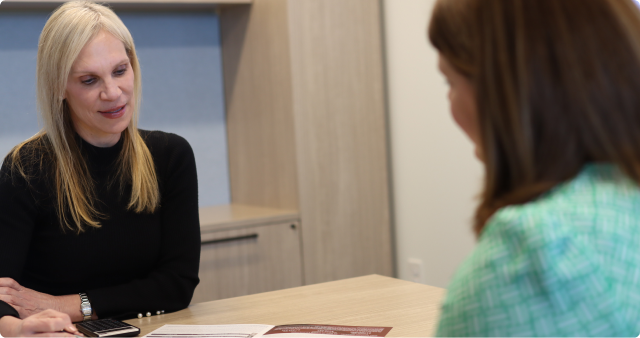Wes and Connor deliver timely insights on U.S. debt, tax reform, interest rates, and practical strategies for family life and financial planning. From economic breakdowns to a creative summer challenge for kids, this episode blends national headlines with personal empowerment, including:
-
Honor and Reflect: As Memorial Day passes, remember the brave service members who gave their lives for our country
-
Assess the Moody’s Downgrade: Understand the implications of the latest U.S. debt downgrade and why it matters for your investments.
-
Track Interest Rates: Learn how rising interest rates are shaping the market and impacting U.S. debt payments.
-
Unpack the New Tax Bill: Dive into the proposed tax reforms and how they could affect deficits and economic growth.
-
Explore Economic Math: Review real government revenue vs. spending figures and why the math might give room for hope.
-
Leverage Hauser’s Law: Discover why federal tax revenues have been shown to stay consistent as a percentage of GDP, regardless of tax rates.
-
Promote Economic Growth: Realize that boosting GDP, not tax hikes, may be the most effective way to reduce deficits.
-
Launch a Summer Challenge: Get inspired by Wes’s 30-day happy retiree family summer challenge to keep kids engaged, productive, and learning life skills.
-
Design Financial Plans: Evaluate your own retirement options and financial plans.
-
Compare Global Productivity: Learn why U.S. tech leads the world—and why Europe may be falling behind in innovation and private funding due to its legacy-based corporate structure.
Read The Full Transcript From This Episode
(click below to expand and read the full interview)
- Wes Moss [00:00:02]:
The Q ratio, average convergence, divergence, basis points and BS. Financial shows love to sound smart, but on Money Matters, we want to make you smart. That’s why the goal is to keep you informed and empowered. Our focus providing clear, actionable information without the financial jargon to help 1 million families retire sooner and happier. Big based on the long running WSB radio show, this Money Matters podcast is tailor made for both modern retirees and those still in the planning stages. Join us in this exciting new chapter and let’s journey toward a financially secure and joyful retirement together. Connor Miller, here in studio. It is Memorial Day weekend and as we do on every Memorial Day weekend, we pause to remember and honor the brave men and women who literally gave their lives in service to this country.Wes Moss [00:01:03]:
And we wish you all a meaningful Memorial Day holiday and reflective what I’m reflecting on right now. CONNOR miller, as we get into the show and the meat of Money Matters, we’re going to talk about the US Economic well, the rating downgrade on our debt. We saw interest rates move this week. That was the biggest market story of the week. And of course the passing at least so far. And this will continue to change and get modified. But at least the looks like the scaffolding or the real bones and architecture of the big beautiful tax bill. And you did some scoring on that.Wes Moss [00:01:38]:
But before we do that, this is also a time when children are out of school and we’re all in different phases and you may have a child that just finished college and they’re lobbying for their first job. I’ve talked to a bunch of college grads over the last week or two. That seems like it’s a pretty tough environment for kids to get hired. I’ve just spoken to some smart kids with great degrees and not only are they looking, but their, their cohorts looking or anywhere from a kindergartner who gets out of school and he shows up at home and he doesn’t have a job and he’s got nothing to do. And I realized this week, CONNOR miller, I don’t know, I want to ask you about your children, but I think there’s a lot of children wandering around over this past week that remind me of just a bunch of little unhappy retirees. I noticed it this week because even though we’re going to these half weeks, the kids were done, I think on Wednesday, they roll. It was kind of a rolling like one was done on Tuesday, one was done on Wednesday. So it wasn’t like school’s over.Wes Moss [00:02:37]:
It’s kind of a rolling end to taper out the school year. And I’m in the middle of work week. I’m in the office. When I get home, the kids are, you know, lounging around, bored. I’m like, wait a minute. You’re just like a little unhappy retiree because you’ve got. You don’t have anything to do, you know, a schedule. You haven’t figured out your new life.Wes Moss [00:02:59]:
You’re in a transition. Do you see that? Your kids are too young, but does that ring a bell?Connor Miller [00:03:05]:
Yeah, they. They finished preschool last week, so they’ve been out about a week now. And you’re right, it’s like they’re. There is some excitement about summer, though, that comes in the first week is a lot of fun. And then I think you get past Memorial Day and it really hits.Wes Moss [00:03:19]:
You’re looking around, we gotta get around.Connor Miller [00:03:21]:
We gotta get these kids in some camps and get them back.Wes Moss [00:03:25]:
That’s why the summer camp is so huge now. I grew up on a farm and there was no, there wasn’t any doubt. I was back in Pennsylvania this week or last week just for a brief visit. And I saw on my dad’s refrigerator a list of the things that he wanted to do. I think it was for the month of June coming up. And it is an exhaustive list of things. I had my, my kids read it. Same handwriting.Wes Moss [00:03:50]:
I remember as a child when I would get these lists. And they’re scary lists because they’re long and they’re usually not even on a regular piece of paper. You like small pieces of paper. This was on like a 3 inches wide, 12 inch long list of things to do. And they were all. I said, me and my kids read. I was like, read this list. Like, okay, mow the field.Wes Moss [00:04:08]:
He said, that’s only three hours. How about this? Build cabin. You think that’s a day? You think that just takes a day? There are some things I didn’t understand, like something about shucking the pottery house. Or maybe it was the stalls. I don’t even know what that was. It’s definitely not oysters, but it’s some sort of task to do.Connor Miller [00:04:30]:
And these were things when you were a kid you were assigned to do as well.Wes Moss [00:04:34]:
Mostly. Mostly. Now this to my dad’s list. He does so many different eccentric crafts as well. He’s a, he’s a lot of corporations. One was like, make flannel shirt that doesn’t take five minutes. One of them I think was like, make saddle. Sounds easy, but how long does it take to make a leather saddle?Connor Miller [00:04:55]:
That doesn’t sound easy to me.Wes Moss [00:04:56]:
So, anyway, so I read this list and I realized, like, I grew up with just an incredible amount of stuff that it was just supposed to do all the time, lots of lists. And I realized the little children running around my place, and they’re not all little, they don’t have enough to do. So. And again, part of it is that we would all work growing up, but when you’re like 13, it’s hard to work. You live in the city, plus you have a bunch of sports and it’s hard to actually do it. But what about all that other time? So I came up with a 30 day summer challenge for three of my four kids, my three youngest. And it’s a long list. It is a long list of daily assignments.Wes Moss [00:05:35]:
It’s like a curriculum we made up that should take anywhere from one to three hours per day, one to three from the oldest in that group. And I modified it for my little guy to spend 30 to 45 minutes. And a lot of pushback in the very beginning of that 30 day summer challenge. But after the first couple of days, I really like the summer challenge. What’s my next summer challenge?Connor Miller [00:05:58]:
Okay, so I’ve seen probably they can.Wes Moss [00:06:01]:
Be non unhappy little retirees. They just need lots of stuff to do.Connor Miller [00:06:05]:
I’ve seen on social media that some parents will go as far as to say, hey, you’re not getting. We’re going to change the WI FI code. You’re not getting the WI fi code until you finish all your chores for the summer.Wes Moss [00:06:17]:
Okay. You know, you know what happens as a parent there. You do that in the first day, then they get the new WI FI code, and you’re like, am I going to really change this every day? And life goes right back to normal. Not saying our little summer challenge won’t go right back to normal, but we’ll see. We’ll see. So far, so good. How about, what’s your take on the Moody’s US debt downgrade?Connor Miller [00:06:42]:
Yeah, I mean, this was something, I think for some investors in some parts of the market, maybe caught a little off guard just in terms of timing. But I think it’s important to remember Moody’s was the third and final of the three major credit rating agencies to downgrade the debt. So this started all the way back, I think, in 2011 with S&P downgrading. Fitch downgraded back in 2023, and then Moody’s became the third about a week ago to do so, downgrading it from the highest pristine rung of AAA to essentially AA plus double A1, however you want to categorize.Wes Moss [00:07:21]:
On the surface, it’s hard to even understand. To double, it’s AAA down to double A1. They both sound pretty good to me. But again, it’s a notch lower. The other rating agencies are already done it. And the reasons of, we all know the reasons. It’s. It is rising debt and deficits.Wes Moss [00:07:36]:
Deficits, the annual debts. The total again, which is what now 34 trillion we’ve got, or 34 trillion, I think, at least. And I know there’s a debt clock that we can track that. And it rises as we see it here, increasing interest rate payments. This is really the, the secret ingredient to this deficit that we’ll talk about in a second. And then. And this before the big beautiful tax bill, more spending than revenue. And that’s just.Wes Moss [00:08:08]:
If you’re a person and you’re spending 125 grand a year and you’re bringing in 100, you’ve got a, you got a deficit. And, and that’s exactly what we’ve been doing as a country. However, it’s still not an immediate emergency. And the way I kind of look at this, and you and I were speaking of what? Well, the cbo, the Congressional Budget Office, says that the new tax bill would increase. Further. Increase deficit to 3. About $3.1 trillion over 10 years. So $300 billion a year, which.Wes Moss [00:08:37]:
It’s a massive amount. What they don’t do is they don’t account for increased economic growth. They also don’t account for the tariff revenue coming in. So to your point, if you were to count those two, what’s the math?Connor Miller [00:08:54]:
Well, I mean, we’ll just start with tariffs because it’s, it’s, I guess it’s a little easier mathematically and you can make more assumptions based on it. But let’s just say we import about $3.3 trillion of goods. Based on some of the deals and agreements we’ve seen, seems like the 10% universal tariff is going to stick. So as long as that imported good number stays the same, it’s about 3 to $330 billion a year. A year times 10 over the last decade. Does that offset it $3 trillion? It could.Wes Moss [00:09:24]:
So think of it this way. We’re bringing in a lot. It’s not like we don’t break. The US Government doesn’t bring in a tremendous amount of revenue. And you found an amazing chart that just shows all the big outflows and the big inflows. So again, the Biggest inflows, of course, individual income tax is 1.7 trillion. Social Security retirement also. Again, who pays that? We pay that in our FICA, social insurance.Wes Moss [00:09:49]:
Insurance and retirement, that’s one little over a trillion. Then corporate income taxes, 250 billion. Is that amazing? The corporate income taxes are dwarfed by the individual. Then you have excise taxes, custom taxes, miscellaneous estate and gifts, etc. So you pull that all in. And this is estimated for 2025. Total receipts. Come.Connor Miller [00:10:09]:
This is. Yeah, just through. Through May of 2025. So not even counting the full year.Wes Moss [00:10:15]:
Oh, right. So this is just. So far, we’ve brought in 3.1 billion. 3.1 trillion. I’m sorry, this graph here says 3,110 billion, which is 3.1 trillion. And then we have outlaid so far 1.15 trillion. So the deficit so far already this year is a little over. A little over a trillion dollars.Wes Moss [00:10:37]:
So that’s the math on this. The. The outlays, of course, biggest to smallest. Social Security so far is 900 billion. Health is number three. Unless I skip number two for a reason. Health would be 550 billion. That’d be.Wes Moss [00:10:51]:
That would be, let’s see, five. They have health and they have Medicare. Connor Miller, Medicaid. So Medicaid, Medicare, Affordable Care act. Okay, so there’s two, right? And then the category of only 65 plus, that’s Medicare, another 550 billion. Defense, a little over 500 billion, et cetera, et cetera, number two on the list. And this is the big variable here, clocking in at $580 billion in net interest. So that’s the interest we’re paying on the debt.Wes Moss [00:11:24]:
That’s the big deal here. And if you looked at that in relation to how much we have as a deficit so far, it’s about 60% of what we have as a deficit is because of that net interest. Now, it’s not going to ever be zero anyway, but a huge variable there is that rates are a lot higher today than we were a couple of years ago, and that’s increasing the expense on the debt.Connor Miller [00:11:48]:
And that was one of the biggest things that Moody’s cited was this idea of mandatory spending. And so you throw spending on medical, you throw Social Security in there, and then you throw your net interest payment because the government has to pay its interest. That has risen to about three quarters of the entire US Budget today. And they expect that to rise to close to 80% over the next five or so years.Wes Moss [00:12:19]:
Not that I would ever be a politician, but If I were a politician arguing for tax cuts, I’d look at Hauser’s Law, because what’s so fascinating about that, you go back to the really 1940s, no matter what our tax rates have been in the United States, and 70% at the high rate, 37 at the low rate, lowest high rate. It’s incredible that no matter what, we’ve reconfigured the tax code to Hauser’s Law shows and you’ve done your own version of this. We still bring in about the same tax revenue relative to GDP. It’s about 19.5% of whatever GDP is, no matter what rates are.Connor Miller [00:12:56]:
We had an interaction earlier in the week talking about the Moody’s downgrade and taxes and how much revenue is coming into the government. And so we wanted to pull some stats just to see where there was some flexibility. You have this old debate of do we increase taxes? Do we cut spending? And so we just ran what the historical federal tax revenue as a percent of GDP is. And so I pull this chart, and basically what it says is about 17% of GDP comes in the form of federal tax revenue. We raise that every year since those are your numbers since World War II. And I was like, wes, you got to see this. This is going to be great. We could talk about this on the radio.Connor Miller [00:13:37]:
And you’re like, yeah, that’s Hauser’s Law. Like, someone discovered that, but 32 years ago.Wes Moss [00:13:42]:
Cool thing would be, if it weren’t for time, it would be Miller’s Law, because it’d be Conor Miller that had discovered that. Now, it’s funny, yours is a little lower than Hauser. I wonder if he includes fica, but maybe yours does, too. They both say the same thing, that we’re no matter what rates are, Americans still end up kind of paying the same amount regardless of the economic cycle, regardless of where tax rates are, the government collects. Call it whether it’s the Miller Principle Law or the Houser Law, it’s a little shy of 20% of whatever the. Which is. Which is also interesting. The total gross domestic product in the United States, which is a totally different number than income, which we’re paying taxes on.Wes Moss [00:14:27]:
So. But just a really interesting phenomenon. So no matter what we do, that’s about what happens. That would argue, Connor, that the only real way to increase revenue into the government is economic growth as opposed to raising taxes. So what the CBO doesn’t do in the new tax bills is doesn’t assume that growth is going to go up because of XYZ tax bill. I don’t think they typically will do that anyway, but they haven’t done it here. And if we get a little bit of economic growth, then perhaps the deficit starts to get fixed. Maybe that’s an overly optimistic outlook on it.Wes Moss [00:15:06]:
I know that people get very frustrated around the deficit and particularly around the debt. And now with higher interest rates, which is your next chart, that’s the real issue is our spending as a percentage of GDP ballooned. Not that much. It’s still. Well, Post World War II average is about 19% of GDP.Connor Miller [00:15:26]:
Yep. You had the run up with, with COVID It always goes up a little.Wes Moss [00:15:30]:
Bit during a recession and it’s come back down, but it’s still a little higher than numbers, 23%. And that’s the real difference. A big chunk of that, I believe. You’re counting the net interest expense in there, aren’t you?Connor Miller [00:15:45]:
That is really the big factor there. Yeah, just net interest on our debt has gone from about $300 billion a couple years ago to now. Could be in excess of a trillion dollars over the course of the year.Wes Moss [00:15:57]:
Yeah, that’s untenable, unsustainable. And we’ve got to figure out a way around it. It’s just that when I look at the inflow, the outflow, potential economic growth, it’s still. Even though we’re saying that politicians will never be able to actually do it because they always wanted to get reelected, the math isn’t impossible, is the way I look at it. It looks like it’s solvable. It’s a matter of when do we solve it. More Money matters straight ahead. Are you facing a fork in the road and deciding between continuing your career and retirement? I’m Wes Moss, host of Money Matters.Wes Moss [00:16:36]:
And this massive life decision shouldn’t be taken lightly. Talk with my team if you’d like help reviewing your retirement accounts and building a financial plan. We can help you review options and offer an opinion based on your best interests. You can find us@yourwealth.com that’s y o u r wealth.com Memorial Day is, I would say, a somber, reflective time for us to honor those who gave their life, literally their lives for our nation. And it’s a holiday to remember and reflect and we like to do that here on the show. We’ve read over the years Flanders Fields, which is an amazing poet by our poem. It’s an amazing poet by the poem, but I’ve done it a couple years of the row. Connor, we’re not going to.Wes Moss [00:17:24]:
I don’t want to do it again. I didn’t write it, so I don’t. But Flanders Fields, if you like a Memorial Day reading. It’s pretty, pretty incredible. We were also talking about how this is also May, the mayhem of May, which is all about graduation. Graduation’s exciting and it’s this buildup. And there’s the graduation and there’s finals, there’s graduation, then there’s the graduation parties and then what. There’s this shock of what.Wes Moss [00:17:50]:
What’s next. And again, maybe your kids have a full time summer job. Maybe they’re going to. You’ve. They’ve already planned out the summer and there’s camps maybe, maybe you work on a farm and there’s plenty to do. Okay, you’re not in school. Well, I got a fence to repair and I’ve got a fence line to weed whack and a mo. A field to mow and, and bail and haze to bail.Wes Moss [00:18:11]:
But if you’ve got kind of that middle age, the tweener type age, they’re not just headed off to the office in the morning. They’re not going to work. And Connor Miller, you’re not bringing your girls to work.Connor Miller [00:18:24]:
Hopefully not.Wes Moss [00:18:25]:
Probably not. So I realized this week as when school finally ended, these kids were walking around like little unhappy retirees. Why? Because they had nothing to do. And yeah, they’ve got plenty of big chunk things, I. E. Sports and almost every. There’s a lot of weekend travel and Friday Saturday travel. So there is plenty to do.Wes Moss [00:18:47]:
But it’s all of the other time that that concerned me and I remember this from other summers and they kind of look a little bit lost. So I said, you know what? I’m going full summer challenge mode with these kids and I don’t know if they believe that I would actually do it. The impetus I was home recently in Pennsylvania. I saw one of my dad’s old fashioned lists. He makes it for himself, he’ll make it for me. It was 52 things on the list. Anywhere from mow the field to build a cabin with a pizza oven. And I thought, wow, that’s.Wes Moss [00:19:18]:
Those are the lists. I remember it was a. He was a list guy. He is a list guy and he still does it and he’s in his mid-70s. So I thought, all right, I’ve got to get. I grew up dealing with these lists and my children are going to get that. So I came up with, I’d say a little bit more of a curriculum I call the 30 Day Summer Challenge. And the focus is it’s life skills reading because I’m worried about AI making it so people don’t read and don’t write.Wes Moss [00:19:45]:
So I want, I want to make sure that doesn’t happen and personal responsibility. So I’m not going to go through all of these. Connor. But number one, build your personal contribution to wellness routine. Like get a schedule and spend an hour or two hours just designing that. Number two, build your summer reading hit list. So give me 10 books that you want to read, rank them, then we’re going to present it to us. We’ll pick your top five and you’re going to, you’re going to read 45 minutes, an hour every single day and there’s going to be projects around those books.Wes Moss [00:20:12]:
Number three, letter to my future self. Number four, build a two week workout plan. So early on like, okay, what are you doing exercise wise? More important for my, my one going into sophomore year, less important for my rising fourth grader. But he goes, dad, I’m going to do it. Doing 25 jumping jacks, I’m doing, I’m doing 10 pushups. It doesn’t matter what it is, it’s the fact that they’re doing it. Design your senior year resume. What do you want it to look like now that you’re headed into 10th grade? Like what would ideally be if to get into a school you want to get into? And then this one, I like Spike Lab Deep Dive, which is a website I found that I want them to spend an hour or two or three on to figure out these are non traditional projects anywhere from business, entrepreneurship, volunteer, charitable things that you can do and startup.Wes Moss [00:21:02]:
And start thinking about today. Who knows if any of this will work, but at least they’ll have a structure and they won’t be little unhappy retirees.Connor Miller [00:21:10]:
And so what was their reaction when you gave them the list early on?Wes Moss [00:21:14]:
Didn’t love it. They were kind of like, oh my, this is like, whoa, Dad’s gone crazy. And then a couple days in, because I’ve only been doing a couple of days, they actually, they think it’s almost fun. Cause they’re not, they’re kind of fun. And when you’re, they’re school like, but they’re not, I think they’re more fun than school. And it’s, they get it. And my little guys actually liked it the most. My oldest one that’s doing it kind of came around from this frowny face about it to oh, okay, what’s my next like what’s assignment number three? So they’ve come around Cause I think they didn’t think I would do it.Wes Moss [00:21:52]:
They didn’t think I would do it.Connor Miller [00:21:53]:
I bet by the end of the summer or after the 30 days, going to be glad that they did.Wes Moss [00:21:58]:
My summer challenge is to make sure the kids do the summer challenge. Because it’s actually a little more work than I anticipated. And that’s okay. All right. We talked about debt. Essentially, we have too much money going out. A big chunk of that’s interest. And.Wes Moss [00:22:14]:
And nobody’s cutting Social Security or Medicare. There may be some modifications with Medicaid, and I know that is a third rail for a lot of folks, but that’s looks like at least what’s happening in this new bill. But there are gonna be a lot of changes by the time it finally gets passed and signed. So we’ve got time on that. The other thought would I wanna talk about rising interest rates and the stock market. Bonds can compete with stocks. And this is an interesting, again, another study. Connor Miller’s constantly doing studies.Wes Moss [00:22:47]:
He may do a study. Next thing you know, he figured out Hauser’s Law. He never even read Hauser’s Law. I told him it was Hauser’s Law. It’s really Miller’s Law. By the way, your number is a little different. Yours is lower than Hauser.Connor Miller [00:22:59]:
It’s funny, we’ve been going through this interview process trying to bring on another investment analyst. And the one question I get is, what’s the key to success in this job? And the thing I always say is this business is always changing, and the one thing you have to have is passion, but curiosity, right? So anytime you see something that comes up, you got to stay curious. And I think that’s where a lot of this comes from, is just seeing you see a stat and you’re like, all right, I wonder how that works.Wes Moss [00:23:29]:
That’s essentially what Money Matters is. It’s so fun to be able to dig into what is happening in the world and what it means for investors. And there’s always a lot of layers to it. And it takes some work to make everything that’s so complex in the world. The work is in making it simple and understanding it. And that is what’s so fun about doing this. So I appreciate you being here often with me here in studio and helping figure out what we’re so curious about to bring to the Money Matters audience. Here’s an article.Wes Moss [00:23:59]:
Now, this is not from you. This is from WSJ. And I think this is the article of the week. And it’s about Europe relative to the United States. But you know what? It essentially fortifies and is another giant data point that there is nothing that even comes close to the army of American productivity. And you see it when you start looking at the tech industry again, largest industry in the United States, largest industry in the world. And looking at the tech industry in Europe versus the United States and the numbers are kind of shocking. So one, yes, Europe, totally behind, not just falling behind, is just woefully behind the global tech race.Wes Moss [00:24:44]:
They don’t have homegrown tech giants like the US and some in China. There are risk averse business culture, heavily regulated, super slow moving labor laws and the venture capital money in the United States like an ocean. The venture capital money in Europe is like a small pond. It’s like there’s no comparison. Entrepreneurs and investors over there, they get frustrated, they’re excited here, they get frustrated over there. And yes, they have world class talent, they have early promise, but they’ve got this fragmented market over there, got all these different countries, they all speak different languages, yet they’re part of a union, they’ve got different rules, all these different regulations. So it’s really, we’ve seen a real stagnation. Here’s some of the stats that here’s my.Wes Moss [00:25:32]:
I’ll start with my favorite stat. The average founding year. So this is the age, the birthday of the top 10 public companies in the United States. Average birth year 1985. All right, not a baby, but 1985 average founding year, top 10 public companies in the United in the EU. 1911. 1911. And it just shows you that the biggest companies in Europe, they’re legacy businesses.Wes Moss [00:26:05]:
You’re talking about banks. These are institutions just trying to protect the house, not innovate and create something new. The valuation of private tech companies in U.S. versus so the EU is about 333 billion. 333 billion. It’s a third of a trillion. That’s 170 companies in the EU United States, 690 companies worth 2.5 trillion.Connor Miller [00:26:34]:
And this is just private companies. This is just private, not including the Apple, the Microsoft, the Nvidia, because it’s the same. And the private markets reflect what goes on in the public markets as well, where there’s really only one, maybe two major tech companies you can think of coming out of the eu. All of them are in the us.Wes Moss [00:26:55]:
It looks like the biggest one in the EU right now is Stripe relative to the biggest one in China is ByteDance. The biggest three in the United States, SpaceX, Xai and OpenAI aren’t two of those owned by Elon.Connor Miller [00:27:12]:
Those are two Elon companies.Wes Moss [00:27:14]:
He owns two of the largest private companies in the United States. Part of its productivity gap. Back in the 90s, workers in the EU produced pretty much the same as the U.S. 95% of what U.S. workers did per hour. Today that number is below 80%. How did that happen? Just over the past 25 years. Really? What’s different about the last 25 years? I mean, culture’s probably the same there as it is here.Wes Moss [00:27:49]:
One of the big variables has to be technology. They didn’t quite catch the full wave of technology. And then VC. Here’s the ocean versus the puddle. United States, European. Europe’s VC funding is just 20% of the United States. The EU. Imagine being a company, a startup company and you’ve got to go to a bank in the EU and they’re like, okay, put up some assets.Wes Moss [00:28:15]:
Where are you building? Well, I’m a startup, I don’t have any assets. So they want physical collateral. Again, for startup, not so much. So that is just the quiet persistence of the army of American productivity doing a little bit extra every day, doing a little bit more work, a little more innovative and then the environment to be able to be more innovative with less regulation, et cetera here in the United States. And guess what? That’s what we get to invest in for retirement. We don’t have a ton of time. And I just wanted to at least briefly get to the relationship between where rates are and rates went up this week. We were 4.6 on the 10 year treasury at one point this past week.Wes Moss [00:28:59]:
And what’s the low this year? We got down to. Do we get sub four this year?Connor Miller [00:29:04]:
Yeah, right after Liberation Day we got down to like in a 3, 8. 3.8.Wes Moss [00:29:09]:
Yeah. And I know these numbers don’t sound like a lot, right? 3.9 to 4.5, it’s okay, it’s 0.6 of a percent, but that’s a big percentage move when it comes to the cost of money. And it has market implications. And you ran again another Miller study this week that shows the different rates of return for markets in these different interest rate tranches. If you are bucket, so under three and three quarters, then three, three quarters to four, et cetera. And window markets at least since 2022, which is not that big of a timeframe. But what is the takeaway around that?Connor Miller [00:29:47]:
Well, and the reason we started with 2022, that was the start of the bull market really. If you go back beyond that, rates weren’t even in the ballpark of where they are today. You have to go back to the late 2009, 2010, even see a four and a half percent rate because they’re so much lower, so much lower after the global financial crisis. But four and a half percent is kind of that line of demarcation of where you really start to see stocks slow down. There’s not a ton of volatility associated with it, but when you compare the different tranches, basically anything below four and a half, we’ve had an excess of 20 plus percent returns on an annualized basis. When the 10 year treasury, which is the benchmark rate, is above 4.5%, stock prices have been about flat and that’s in a bull market which is defined as a sustained period of upside in stocks.Wes Moss [00:30:41]:
And part of that is bond competition. 1 Higher rates slow down the economy because everything gets more, the cost of money goes up. But if you’re looking at it from a have a Choice here at 4 and a half to 5 and a half percent on treasury rates, investors start to look around and say wait a minute, why take risk in equities when I can earn 5% with Treasuries? And now again, it’s all a marginal change. It’s the out of 10 people. Maybe when rates look up then maybe 5% of new investors say okay, I’m going to switch to bonds. So there’s some competition there I think is part of it. One and two, there’s just the worry.Connor Miller [00:31:22]:
About an economic and you think about that’s just Treasuries too, right? There’s investment grade corporate bonds, there’s high yield bonds that pays even more. So that introduces even more competition into the equation.Wes Moss [00:31:32]:
Well the good news is at least in this study, stock equities still aren’t down. When we go over 4.5%. It’s just the rates of return due at least over the last call it three to five years, they slow down. So we’ll continue there’s probably going to be continued tax progress and news that we’ll continue to cover. We’ll continue to talk about the US fiscal situation and we’ll continue to talk about being a happy retiree.Connor Miller [00:32:03]:
Theme number one, we’ll check in on the summer challenge next week.Wes Moss [00:32:05]:
Yeah, we’ll check in on the summer challenge. Could be a happy retiree summer challenge too. All right. With that, thank you for tuning in to Money Matters. You can find Connor Miller and find me easy to do so@your wealth.com that’s y o u r wealth.com have a wonderful rest of your day.Mallory Boggs (Disclaimer) [00:32:27]:
This is provided as a resource for informational purposes and is not to be viewed as investment advice or recommendations. This information is being presented without consideration of the investment objectives, risk tolerance, or financial circumstances of any specific investor and might not be suitable for all investors. The mention of any company is provided to you for informational purposes and as an example only and is not to be considered investment advice or recommendation or an endorsement of any particular company. Past performance is not indicative of future results. Investing involves risk, including possible loss of principal. There is no guarantee offered that investment return, yield or performance will be achieved. The information provided is strictly an opinion and for informational purposes only, and it is not known whether the strategies will be successful. There are many aspects and criteria that must be examined and considered before investing.Mallory Boggs (Disclaimer) [00:33:15]:
This information is not intended to and should not form a primary basis for any investment decision that you may make. Always consult your own legal tax or investment advisor before making any investment, tax, estate or financial planning considerations or decisions. Investment decisions should not be made solely based on information contained herein.
Call in with your financial questions for our team to answer: 800-805-6301
Join other happy retirees on our Retire Sooner Facebook Group: https://www.facebook.com/groups/retiresoonerpodcast
This information is provided to you as a resource for educational purposes and as an example only and is not to be considered investment advice or recommendation or an endorsement of any particular security. Investing involves risk, including the possible loss of principal. There is no guarantee offered that investment return, yield, or performance will be achieved. There will be periods of performance fluctuations, including periods of negative returns and periods where dividends will not be paid. Past performance is not indicative of future results when considering any investment vehicle. The mention of any specific security should not be inferred as having been successful or responsible for any investor achieving their investment goals. Additionally, the mention of any specific security is not to infer investment success of the security or of any portfolio. A reader may request a list of all recommendations made by Capital Investment Advisors within the immediately preceding period of one year upon written request to Capital Investment Advisors. It is not known whether any investor holding the mentioned securities have achieved their investment goals or experienced appreciation of their portfolio. This information is being presented without consideration of the investment objectives, risk tolerance, or financial circumstances of any specific investor and might not be suitable for all investors. This information is not intended to, and should not, form a primary basis for any investment decision that you may make. Always consult your own legal, tax, or investment advisor before making any investment/tax/estate/financial planning considerations or decisions.













